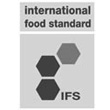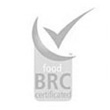Coriander
(Coriandrum sativum)
Coriander seeds – Ingl., Coriander – Ted., Coriandres – Fr, Cilantro, Coriandres – Sp., Кориандр - Russ.
Coriander, like caraway spice, belongs to the Umbelliferae family from the Mediterranean and Middle Eastern countries. It is grown in Eastern European countries (Russia, Ukraine, Lithuania, Romania, Bulgaria), North Africa (Morocco and Egypt) and also in Holland, France, Italy, Spain and India.
Its flowers are white or pink and borne in umbels. The coriander seeds are spherical, similar in size to pepper.
Coriander seeds cleaned and ground, origin East Europe (microcarpum) or North Africa (macrocarpum).
Food Composition
Coriander seeds contain essential oil, phellandrene, linalyl acetate, pinene, cymene, limonene, camphene, vitamin C, caffeic acid, mucilage, flavonoids, sugars, proteins.
Culinary Use
Coriander seeds have a slight flavor of lemon,turning more or less strong depending on the place of origin. They are used to season meats and sausages, but also fish, vegetables, legumes and pastry recipes for biscuits and cakes. Sometimes they are used for special combinations, along with sesame and poppy seeds.
Coriander is the basic ingredient of many spice blends, including curry, and can be found in many recipes of liqueurs and spirits (gin, vermouth and bitters).
Its leaves, fresh or dried, known as”cilantro”are very used in cooking. Its flavor is completely different from that of seeds, and is especially suitable for ethnic meat dishes. It Is widely used in Indian cooking.
Healing Effect
Coriander seeds have digestive and antiseptic properties, reduce intestinal fermentation and colic.
Its infusion is an excellent homeopathic remedy for migraine and headaches, like basil leaves.It is also useful for irritable bowel syndrome, diarrhea.
Coriander seeds are added to water for a relaxing and anti-swelling footbath.
Preservation
Once dried coriander seeds must be stored in a cool, ventilated, poorly lit and dry place.





